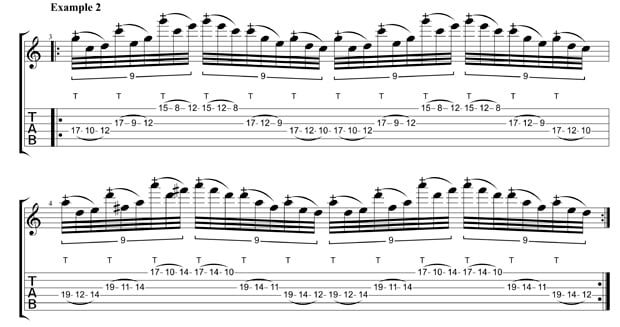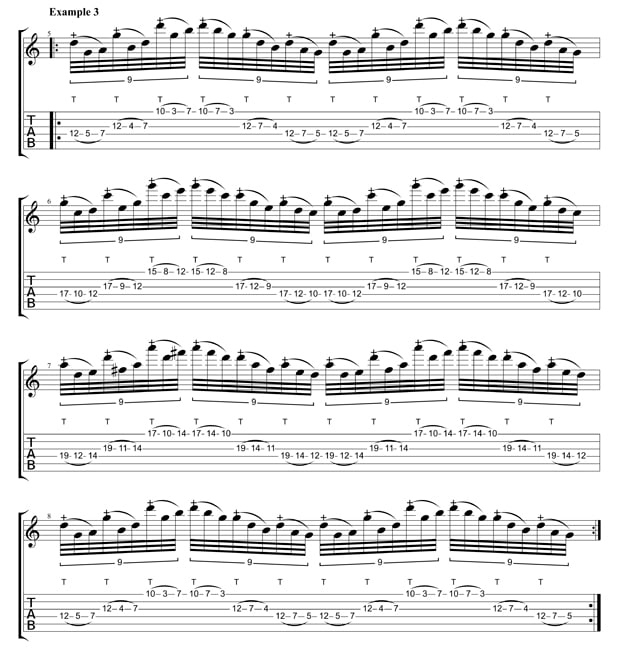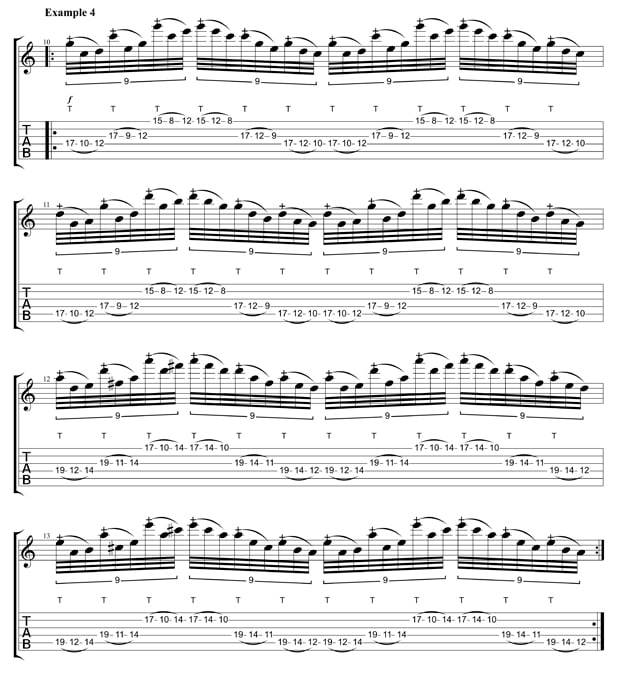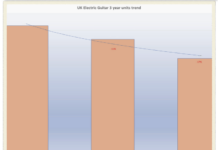
A Guide to Nuno Bettencourt’s Extreme Tapping
Hailed by Guitar World as a “fretboard wizard” and voted “Best New Talent” by Guitar World readers in 1991, Nuno Bettencourt has maintained his relevance since first coming onto the national scene in the late Eighties, thanks to his inventive playing, killer tone and skillful songwriting.
Hailed by Guitar World as a “fretboard wizard” and voted “Best New Talent” by Guitar World readers in 1991, Nuno Bettencourt has maintained his relevance since first coming onto the national scene in the late Eighties, thanks to his inventive playing, killer tone and skillful songwriting.
Best known for his work as the guitarist for Extreme, Nuno also has brought his wizardry to collaborations with a diverse array of artists such as Jane’s Addiction frontman Perry Ferrell and R&B superstar Rihanna.
Extreme’s 1990 album, Pornograffitti, is a guitar tour-de-force featuring incredible riffs, an amazing guitar tone (featuring Nuno’s signature Washburn N4 guitar, Bill Lawrence L500-XL pickup and the classic ADA MP-1 preamp) and wildly creative, technically fascinating guitar playing.
Of the many amazing signature licks that can be found on the album, one of the coolest employed by Nuno (see “Get the Funk Out” and “He-Man Woman Hater”) is his “tapped string skipping add9” pattern. The basic idea is found in EXAMPLE 1. What sets this lick apart is its intervallic interest generated by the string skip and the position shift in the tapped note. Theoretically, the line is derived from a Cadd9 harmony (C, D, E, G), but what’s important is its shape.
To execute the lick, your left hand index finger needs to shift a fret down when it moves to a new string, and as those moves occur, your tapping finger hits the same fret on the D and G strings and then moves down two frets for the high E string. To get this down, practice only the left hand fingerings and their shifts, and then just the tapping moves, then the moves together. Pay attention to the notes at the downbeats of the rhythm to help you feel the groove.

EXAMPLE 2 is an effective loop in Em/G that combines the Cadd9 pattern with its diatonic twin (Dadd9), two frets higher. This is particularly cool when looped.

Thinking diatonically and searching for the same shape on the same strings, there is only one other chord that fits the criteria: Gadd9. EXAMPLE 3 adds the Gadd9 arpeggio to the Cadd9 and Dadd9 in a more intervallically diverse progression. As in our first example, practice this lick by isolating the moves needed for each hand individually and then unite both hands to perform the lick. Note the large position shift from the 3rd bar to the 4th.

EXAMPLE 4 switches between the shapes on the D, G and E strings, and their symmetrical counterparts on the A, D, and B strings. The progression implied is Cadd9-Gadd9-Dadd9-Aadd9. The only note that is not diatonic is the C# in the final bar (D string, 11th fret), but at speed the note fits perfectly, and depending on the harmony you play it over it can yield some interesting results. For example, over an Em chord the C# would imply an E Dorian mode, over a G chord the C# would imply a G Lydian, etc. But really, it just sounds cool fast!

Finally, in the interest of authenticity, EXAMPLE 5 is the phrasing of the pattern that Nuno would typically employ. Note the slight “speed burst” at the end of beat 2, and the “hammer on from nowhere” with the left hand on the last 16th note of beats 3 and 4. Practicing this “hammer on from nowhere” technique will give you a ton of cool options to spice up any of your own string crossing tapped licks. Be sure to try this pattern with all of the progressions from examples 1-4.

Integrating these shapes and techniques into your repertoire will surely give you a powerful weapon for building a lead to an attention-grabbing crescendo, and these licks should definitely set you on the path to creating your own variations. Don’t be afraid to experiment and modify the concept to suit your own favorite keys and arpeggio shapes, and look for other interesting diatonic permutations to find that perfect part for the solo you’re working on.
These licks are as fresh today as they were 25 years ago, so have fun impressing your fellow guitarists with this incredibly effective set of new tools. Happy shredding!
Scott Marano has dedicated his life to the study of the guitar, honing his chops at the Berklee College of Music under the tutelage of Jon Finn and Joe Stump and working as an accomplished guitarist, performer, songwriter and in-demand instructor. In 2007, Scott developed the Guitar Strength program to inspire and provide accelerated education to guitarists of all ages and in all styles through state-of-the-art private guitar lessons in his home state of Rhode Island and globally via Skype. Visit Scott and learn more at www.GuitarStrength.com.
Source: www.guitarworld.com












